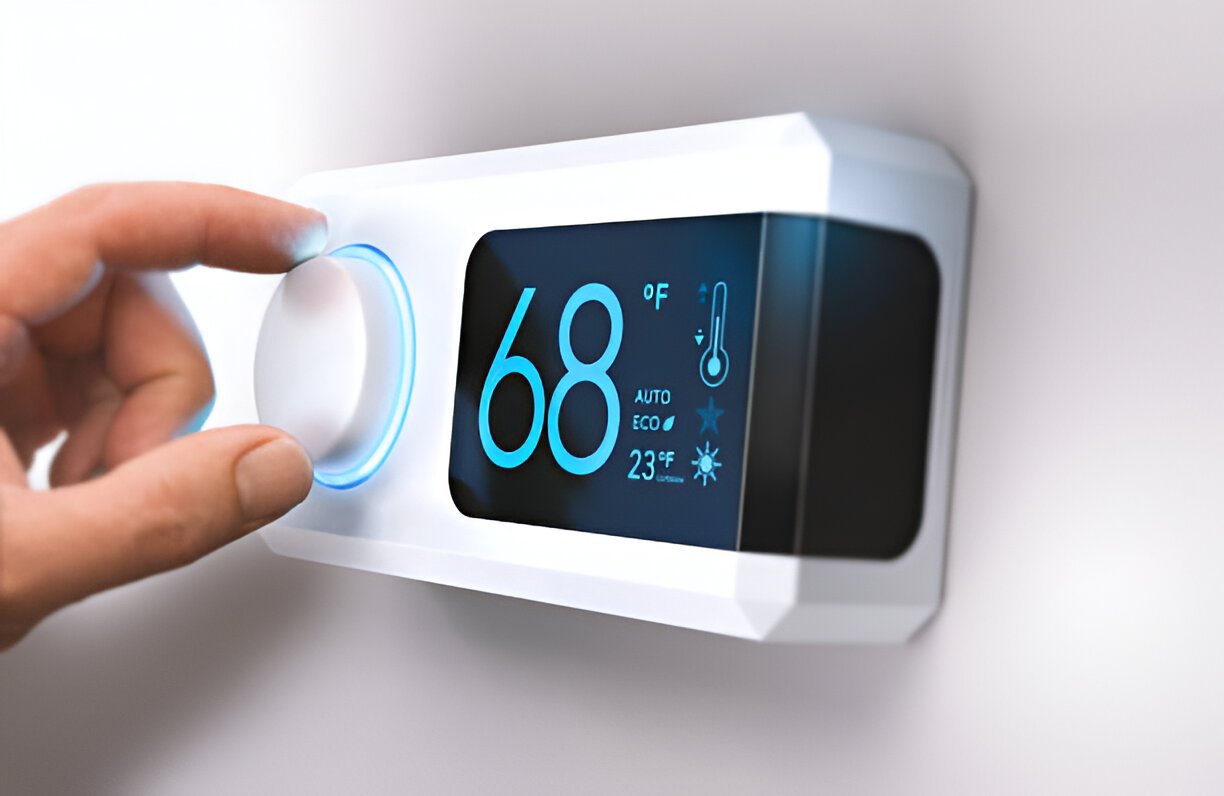Choosing the right digital thermostat for your home can seem like a simple task, but once you start exploring the options, you realize just how many factors play a role in making the best decision. The purpose of this article is to guide you through the process of purchasing a digital thermostat, helping you understand what to look for and how to select one that fits your needs and budget.
A digital thermostat is more than just a tool to control the temperature. It is a device that directly affects your comfort, your energy bills, and even the lifespan of your HVAC system. I’ve spent quite a bit of time researching and comparing thermostats, and in this article, I’ll share my insights to help you make an informed decision.
Table of Contents
1. Understand the Basics of Digital Thermostats
Before diving into specific models or features, it’s important to understand what a digital thermostat does. At its core, a digital thermostat is a device that regulates your home’s heating and cooling systems by automatically adjusting the temperature according to a set program or real-time settings.
Unlike traditional mechanical thermostats, digital thermostats offer more precision, better programmability, and often come with additional features like Wi-Fi connectivity and mobile app integration. They’re more efficient in managing energy use, which can lead to cost savings over time.
2. Key Features to Look for in a Digital Thermostat
When buying a digital thermostat, the following features are worth considering. I’ve found that the right combination of these can make a huge difference in both performance and usability.
a. Programmability
One of the standout features of most digital thermostats is their ability to be programmed. This allows you to set different temperatures for different times of day, ensuring that you’re not wasting energy when you don’t need it. For example, you can set the temperature to be cooler when you’re asleep or away and warmer when you’re at home.
Most models offer varying degrees of programmability, from basic 5-2 day programming (weekdays vs. weekends) to more advanced options that let you set a schedule for each day of the week. Personally, I find the 7-day programmable thermostats very convenient because they let me tailor the temperature to my daily routine without any hassle.
b. Wi-Fi and Smart Features
A Wi-Fi-enabled thermostat allows you to control your home’s temperature remotely through your smartphone or tablet. This is ideal if you’re often away from home and want to adjust the temperature before you return. Some models even offer smart features, like learning your preferences over time and adjusting the temperature automatically based on your patterns.
In my experience, these smart features make a noticeable difference in convenience and energy savings. You won’t need to remember to adjust the temperature manually anymore, as the thermostat will do it for you.
c. Energy Efficiency
If saving on energy bills is important to you, then energy efficiency should be at the top of your list. Many digital thermostats come with energy-saving modes or eco-settings that help reduce energy consumption. Some models even display how much energy you’re using, which helps you stay on track.
I always look for thermostats that come with Energy Star certification, as this ensures that the device meets high energy-efficiency standards. Additionally, a thermostat with a feature like the “auto-changeover” mode (which automatically switches between heating and cooling) can also help maintain energy efficiency.
d. User Interface and Display
The user interface is crucial to ensuring you can easily navigate your thermostat’s settings. A large, clear display with touch controls makes adjusting the temperature a lot more intuitive. Some thermostats also come with color displays, which can add a touch of style to your home.
I personally prefer a simple, easy-to-read screen with minimal buttons. Some digital thermostats come with a touchscreen interface, making it even easier to set and adjust preferences with just a tap.
e. Compatibility with HVAC Systems
Not all thermostats are compatible with every HVAC system. It’s essential to check whether the digital thermostat you’re considering works with your specific heating and cooling setup. For example, certain thermostats may only be suitable for central heating, while others work with heat pumps, multi-stage systems, or even smart-home ecosystems.
I recommend double-checking your HVAC system’s specifications before purchasing to avoid compatibility issues.
3. Comparison of Popular Digital Thermostats
To give you a clearer idea of what’s available in the market, here’s a comparison table of some top-rated digital thermostats based on key features:
| Feature | Model A (Basic) | Model B (Smart) | Model C (Wi-Fi Enabled) |
|---|---|---|---|
| Programmable | 5-2 day program | 7-day program | 7-day program |
| Wi-Fi Compatibility | No | Yes | Yes |
| Energy Efficiency | Energy Star certified | Energy Star certified | Energy Star certified |
| Touchscreen Display | No | Yes | Yes |
| Smart Features | No | Adaptive learning | Geofencing |
| Compatibility | Central heating/cooling | Works with most HVAC systems | Multi-stage, heat pump, etc. |
| Mobile App Control | No | Yes | Yes |
As you can see, Model A is the most basic option, while Models B and C come with advanced features like Wi-Fi and smart capabilities. I’d suggest Model B for those who want the best of both worlds—energy efficiency and smart features without breaking the bank.
4. How to Choose the Right Model for Your Home
Choosing the right thermostat depends on your lifestyle, the size of your home, and your energy-saving goals. Here are a few things to consider:
- Lifestyle: If you’re at home frequently, a simpler, programmable thermostat might be sufficient. If you travel often, a Wi-Fi-enabled or smart thermostat is the way to go.
- Home Size: For larger homes, a multi-zone or smart thermostat that can control different parts of the house independently could be a good investment.
- Energy Efficiency Goals: If lowering your energy bills is your priority, look for models with features like adaptive learning, eco modes, and energy usage reports.
- Budget: Prices can vary widely, so I recommend setting a budget before you start shopping. While more advanced models with Wi-Fi and smart features are more expensive, you can still find affordable options that provide great functionality.
5. Installation and Setup
Once you’ve selected the thermostat, the next step is installation. Some digital thermostats are DIY-friendly, and you can install them yourself if you’re comfortable with basic electrical work. Many come with clear instructions and helpful guides.
However, if you’re not confident in your abilities or if your HVAC system requires a more complex setup, it’s best to hire a professional. The cost of installation can range from $100 to $200, depending on the complexity.
I personally prefer to hire an expert for installation, especially if it involves wiring the thermostat into my HVAC system. This ensures everything is set up properly and avoids the risk of any issues down the line.
6. Maintenance and Troubleshooting
Digital thermostats generally require minimal maintenance, but it’s a good idea to periodically check the battery (if applicable) and clean the thermostat screen to ensure optimal performance. Also, keep an eye on any error messages or malfunctions, as they may indicate issues with your HVAC system or the thermostat itself.
If your thermostat is behaving erratically, I recommend troubleshooting using the user manual or checking the manufacturer’s website for support. Sometimes a simple reset or recalibration can solve the issue.
7. Conclusion
When it comes to buying a digital thermostat, there’s no one-size-fits-all solution. The best choice for you will depend on your home’s heating and cooling needs, your energy-saving goals, and your budget. I’ve found that prioritizing features like programmability, Wi-Fi connectivity, and energy efficiency can go a long way in improving comfort and reducing energy costs.
With the right thermostat, you’ll enjoy a more comfortable living environment while also saving money on your utility bills. Whether you opt for a basic model or a smart, Wi-Fi-enabled thermostat, taking the time to choose the best one for your home is well worth the effort.





